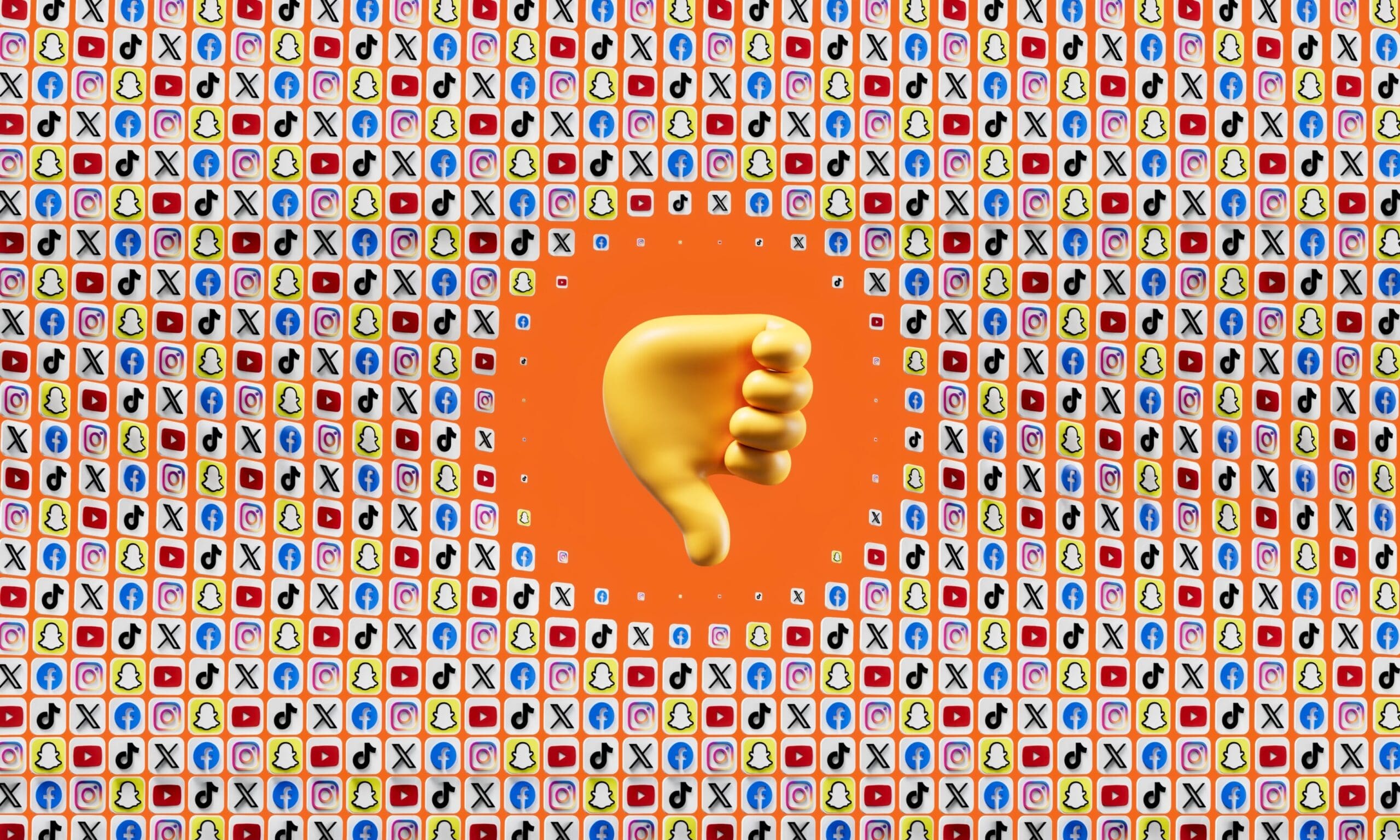Why People Don’t Like Your Marketing

According to various estimates, the average person sees around 5,000 ads or marketing messages in various forms per day. It’s not a terribly scientific number since it includes everything from digital and TV ads to influencer endorsements, billboards, and even logos on t-shirts, but the point is that today’s consumers are more exposed to marketing messages than any generation in history.
Customers have noticed, too. According to Sprout Social, 60 percent of social media users are annoyed by the abundance of promotions from the brands they follow. The industry has even invented the term “banner blindness” in recent years, referring to customers who simply don’t notice ads at all because they’ve seen so many.
It’s our job as marketers to create messaging that’s relevant and helpful, not annoying. Here’s what to look out for.
Mistargeted Marketing
Your product exists to fill a need or solve a problem, but it’s not a problem or need that everyone will have. That’s why traditional methods of marketing often seem so annoying. Tv ads during Monday Night Football for erectile dysfunction pills and hair dye that erases gray hair have no appeal to a 25-year-old woman watching the game.
That’s part of the reason that the old ways of marketing are being usurped by digital marketing. Ads in magazines, on TV, on the radio, and on billboards simply can’t target the right audience without also spilling over to people who don’t care what you’re selling at all.
The solution is careful targeting. First, you have to know who you’re talking to. That ties back into the buyer personas we discussed earlier, as well as the psychographics that help you understand how people think. The better you can define the kind of person whom your product will help, the more careful you can be with your marketing.
The second piece of the puzzle is finding those people. Everyone uses the internet and interacts with the world in slightly different ways, from the social networks that they spend their time on to the media they consume to their habits when browsing the web. It’s worth the effort to find out where your potential customers are and what they’re doing so that you can talk to them as directly as possible.
Inauthentic Marketing
One of the most common criticisms of marketing and advertising campaigns is that they’re deceptive, baiting people into buying things with carefully worded deals and claims. While we think that’s a slightly unfair characterization, and it’s pretty uncommon to find outright lying in ads these days, the impression is still there.
No product is perfect. You’re probably not the cheapest or the most fully-featured version of your product out there, and your competitors have something to offer, too — that’s why they’re still in business.
You need to be honest about your strengths and weaknesses, the people you can help, and what you have to offer.
Mediocre Marketing
As we mentioned before, marketing can be overwhelming. It’s one thing to be exposed to 5,000 marketing messages a day, but it’s even more frustrating when those messages are a waste of time. That means we have a duty as marketers to make good use of the time people spend paying attention to us. Our messaging needs to be intriguing, entertaining, and informative so that even if our targeting isn’t perfect, we at least contribute something to the conversation.
Making Your Marketing Work
To create more effective marketing messages that are intriguing, entertaining, and informative, you can follow these strategies:
- Storytelling: Craft compelling stories that resonate with your audience. Storytelling helps to humanize your brand and connect with customers on an emotional level.
Example: Rather than just promoting a new product, share the story of how it was developed, the problems it solves, and the impact it has had on real customers’ lives. For instance, a skincare brand can tell the story of a customer who struggled with acne and how their product transformed their skin.
- Visual Content: Use eye-catching visuals like videos, infographics, and images to convey your message effectively. Visual content often captures attention faster and is more shareable.
Example: A food delivery service can create short video clips of mouth-watering dishes being prepared and delivered to customers, showcasing the convenience and deliciousness of their service.
- Engagement and Interactivity: Encourage interaction with your content. This can be through polls, quizzes, contests, or interactive infographics. Interactive content keeps the audience engaged and invested in your message.
Example: A clothing brand can run a social media contest where customers submit photos of themselves wearing their products, with a chance to win prizes. This not only engages the audience but also provides user-generated content for the brand.
- Educational Content: Provide valuable information that helps your audience solve problems or make informed decisions. When people find your content helpful, they are more likely to engage with it and share it.
Example: A financial advisory firm can create blog posts or webinars that explain complex financial concepts in simple terms, empowering their audience to make better financial decisions.
- Entertainment Value: Incorporate humor, creativity, or emotion into your messaging to make it more entertaining. People are more likely to remember and engage with content that entertains them.
Example: A pet food brand can create funny and heartwarming videos featuring pets enjoying their products, making the audience smile and associate positive emotions with the brand.
- Feedback and Listening: Continuously gather feedback from your audience through surveys, social media, and customer reviews. Use this feedback to refine your messaging and adapt to changing preferences.
Example: An e-commerce platform can regularly ask for customer feedback on their shopping experience and use this input to improve website design, product recommendations, and customer service.
- Consistency: Maintain a consistent brand voice and message across all marketing channels. This builds brand recognition and trust.
Example: If your brand is known for its eco-friendly products, ensure that all marketing materials emphasize sustainability, from website content to social media posts and packaging design.
- A/B Testing: Experiment with different messaging approaches to determine what resonates best with your audience. A/B testing helps refine your messaging over time.
Example: An email marketing campaign can test two subject lines to see which one results in a higher open rate. Based on the results, the winning subject line can be used in future campaigns.
- Value Proposition: Clearly communicate what sets your product or service apart from competitors. Highlight the unique benefits that customers will gain by choosing your brand.
Example: A smartphone manufacturer can emphasize its product’s innovative features, such as longer battery life or superior camera technology, in marketing materials to distinguish itself from competitors.
The key to better marketing is to understand your audience, create engaging and informative content, and adapt your strategies based on feedback and testing. By consistently providing value and entertainment, you can make your marketing messages more effective and contribute positively to the conversation.





